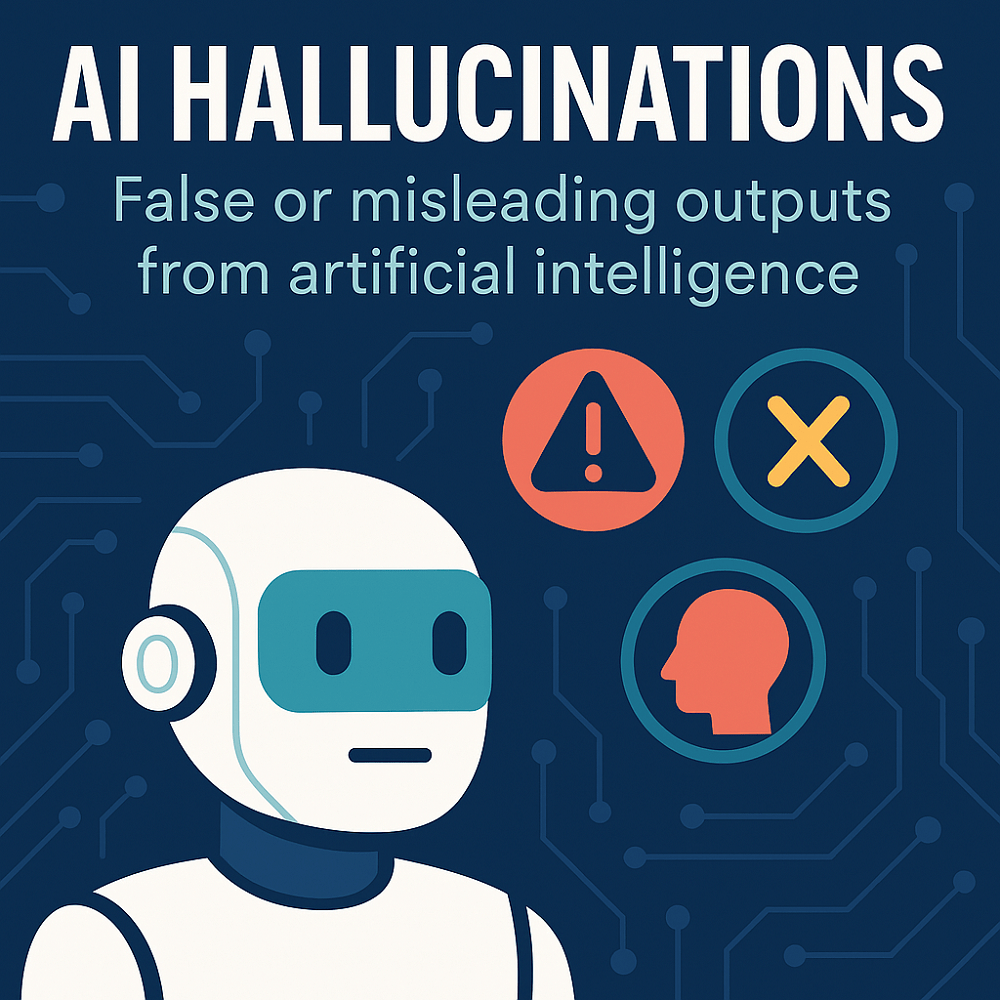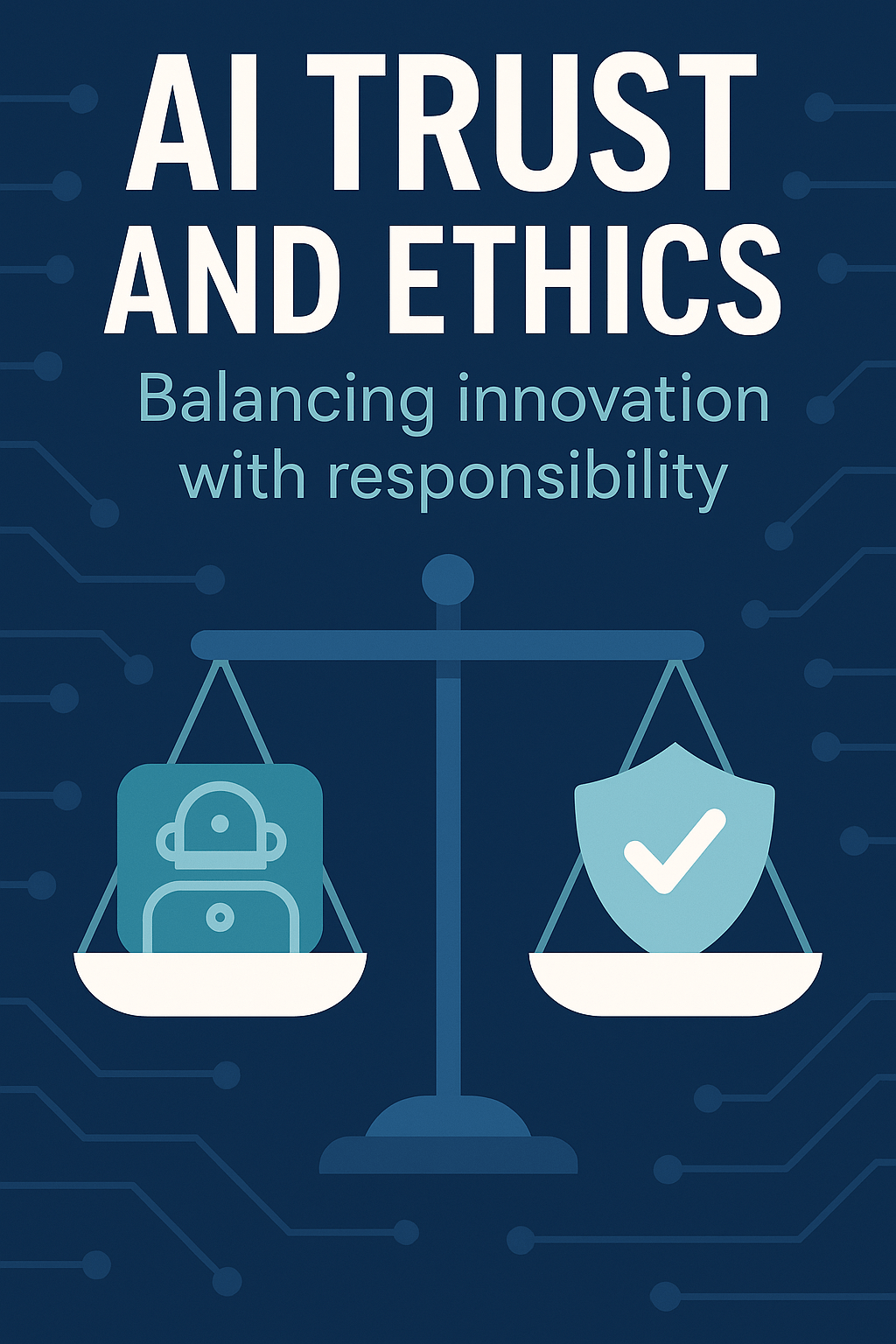Introduction: When AI Sounds Smart—But Gets It Dangerously Wrong
The rapid advancement of generative AI tools like ChatGPT, Midjourney, and DALL-E has ushered in an era of unprecedented creativity and productivity. These systems can draft essays, generate lifelike visuals, summarize lengthy documents, and write code swiftly. However, while these tools can produce content rapidly, the quality varies depending on the task. For instance, AI-generated code may run but often requires debugging, and document summaries may miss nuance or context—particularly in complex or technical fields
But beneath this dazzling surface lies a troubling and under-addressed flaw: AI hallucinations—convincing yet false information presented with unearned confidence. However, with the right measures, AI can be a valuable and safe tool. In the context of AI, “hallucinations” refer not to literal visions, but to instances where a model generates text, images, or data that seem plausible yet are entirely fabricated or inaccurate. This is a known limitation stemming from how AI systems statistically predict patterns without understanding meaning.
These hallucinations are not simple glitches. They are structural failures. When AI misinforms in domains where truth matters—like medicine, law, or finance—the result is not just confusion. It is real-world harm, lost trust, and ethical risk. This article explores the mechanics behind AI hallucinations, the damage they are already causing, and how we must respond to ensure AI’s future is both valuable and safe.

What Are AI Hallucinations?
In the context of AI, “hallucinations” refer not to literal visions, but to instances where a model generates text, images, or data that seem plausible yet are entirely fabricated or inaccurate. This is a known limitation stemming from how AI systems statistically predict patterns without understanding meaning. In simpler terms, this means the AI doesn’t “know” facts the way humans do—it generates responses based on patterns in the data it was trained on, not on actual understanding or reasoning.
Unlike human errors rooted in misunderstanding or context loss, AI hallucinations often stem from how these models are built. Generative AI does not “know” facts; it predicts text or visuals based on learned patterns from its training data, not through reasoning or evidence.
Examples of AI hallucinations include:
- A legal assistant is generating fake case law.
- A chatbot citing non-existent clinical trials.
- An image generator adds extra fingers to a hand.
- A summarizer invents details not found in the original article.
These errors are systematic, not sporadic. They are difficult to detect because they are delivered with stylistic confidence, especially for casual users.
To mitigate the risks associated with AI hallucinations, human oversight is crucial. Users should critically evaluate AI-generated content, cross-reference information with reliable sources, and remain vigilant against potential inaccuracies.
Why AI Hallucinations Happen
AI hallucinations arise from a complex mix of factors spanning data quality, model architecture, and generation mechanics:
1. Flawed Training Data
- Noisy or Incorrect Inputs: AI learns from massive datasets that include misinformation, outdated material, and biased language scraped from the internet.
- Sparse Data: The model may lack enough examples and guess incorrectly for obscure or niche subjects.
- Biased Data: Datasets often reflect systemic societal biases, which the model can reproduce without context or correction.
- Outdated Knowledge: Models trained on static data cannot adjust for new developments unless retrained or externally updated.
2. Architectural Design
- Fluency Over Truth: Most models are optimized to sound coherent, not to be correct.
- Overfitting: When models memorize training quirks instead of learning general rules, they fabricate under unfamiliar conditions.
- Under-calibrated Confidence: AI often “speaks” with certainty even when unsure—a dangerous mismatch.
3. Generation Mechanics
- Probabilistic Guessing: AI predicts the next token in a sequence, not what is true.
- Inference Strategies: Beam search or temperature tuning can boost creativity and increase error risk.
- Lack of Real-Time Knowledge: Models rely only on their limited internal knowledge unless enhanced with live databases (like RAG systems).
It’s important to note that not all AI systems perform equally. The frequency and severity of hallucinations can vary depending on the model’s design, training data, and how it’s deployed. More recent models tend to show improved performance, especially when fine-tuned for specific domains or tasks.
Real-world examples highlight the risks of AI hallucinations. In 2023, a lawyer submitted a legal brief containing fictitious case citations generated by ChatGPT, leading to court sanctions. Similarly, AI-generated medical articles have included fabricated references, posing dangers in healthcare settings.Wikipedia
Different Forms of Hallucinations
AI hallucinations manifest differently across systems:
Text-Based Models
- Fabricated Quotes or Citations
- Incoherent Logic or Contradictions
- Non-existent Historical Events or People
Multimodal Systems (Text-to-Image/Video/Audio)
- Visual Errors: Anatomical inaccuracies or inconsistent object rendering.
- Cross-Modal Mismatch: A video prompt says, “five dogs,” but only two appear.
- Temporal Incoherence: Objects morph unnaturally across video frames.
Where Hallucinations Hurt: Real-World Risks
1. Healthcare
LLMs have offered incorrect dosages, fabricated symptoms, or referenced fake research. An AI chatbot called “Tessa” was taken offline after advising users with eating disorders in harmful ways.
2. Law
AI-generated court briefs have cited non-existent rulings. Lawyers using such tools without vetting the results have faced professional sanctions. For instance, in 2023, a New York lawyer used ChatGPT to prepare a legal brief that cited fictitious court cases, leading to sanctions. This incident underscores the potential dangers of relying on AI-generated content without proper verification. For more details, see the Reuters article: New York lawyers sanctioned for using fake ChatGPT cases in legal brief.legaldive.com+2Reuters+2
3. Finance
When Google Bard misstated facts about the James Webb Telescope, Alphabet lost $100 billion in market cap. Inaccurate financial recommendations could have even graver consequences.
4. Media and Misinformation
AI-written articles and deepfakes have already misled the public. During the 2024 U.S. primaries, fake Biden robocalls tried to suppress voter turnout.
5. Cybersecurity
AI-generated code can include vulnerabilities. Worse, security-focused AI tools might invent threats—or miss real ones—resulting in exposure.

The Ethical Stakes
Hallucinations are not just technical failures. They create moral dilemmas:
- Erosion of Public Trust: Once faith in AI is lost, rebuilding it is incredibly difficult.
- Amplification of Bias: Hallucinations often reinforce stereotypes or omit marginalized voices.
- Accountability Gaps: Who’s responsible when AI outputs falsehoods? Developers, deployers, or users?
- Disinformation at Scale: AI can manufacture fake content at an unprecedented pace.
Can We Solve Hallucinations?
No solution is perfect, but these strategies help:
- Data Improvements: Curate cleaner, more diverse, and up-to-date training sets.
- RLHF (Reinforcement Learning from Human Feedback): Align models with human values and factual expectations.
- Retrieval-Augmented Generation (RAG): Link AI with live databases to verify facts before responding.
- Fact-Checking Integrations: Real-time validation tools flag or block fabricated content.
- Prompt Engineering: Guide models to react with caution or disclaimers.
- Uncertainty Calibration: Train models to “say” when they are unsure.
- Human-in-the-Loop Systems: Keep people in charge, especially in high-stakes use cases.
Designing for Trust
To build AI that is genuinely useful and safe:
- Transparency: Make AI outputs explainable and sources traceable.
- Governance: Define legal and ethical rules around AI deployment.
- Auditing and Monitoring: Regularly test models for hallucination frequency.
- AI Literacy: Teach users to identify, challenge, and verify AI-generated content.
Addressing the Problem
Researchers and developers are actively working on ways to reduce AI hallucinations. One promising approach is Reinforcement Learning from Human Feedback (RLHF), which trains models to align better with human expectations. Another method is Retrieval-Augmented Generation (RAG), where AI cross-checks its outputs against a reliable database to improve factual accuracy. Companies are also introducing “fact-check” plugins and transparency layers to flag uncertain or unverifiable outputs.
Final Thought: Beyond the Illusion
AI hallucinations are not bugs to be squashed—they are symptoms of how today’s generative models are designed. Solving them means rethinking how we train, evaluate, and deploy AI systems. It also means placing human values—not just performance metrics—at the center of the AI development process.
As AI continues to evolve, it’s imperative for developers, policymakers, and users to collaborate in establishing guidelines and safeguards. By promoting transparency, accountability, and ethical standards, we can harness the benefits of AI while minimizing its risks.
We are not just building better tools. We are shaping systems people can trust. Let us do it right.















